Design and Verification of a Novel Energy Harvester for Tire Pressure Monitoring Systems
Abstract
1. Introduction
2. Mechanical Design
2.1. Structural Design
2.2. Working Principle
3. Theoretical Models and Parameter Influence Laws
3.1. Tire Deformation Model
3.2. Torque Transfer and Spiral Spring Energy Storage Model
3.3. Micro-Generator Model
3.4. Steady-State Voltage and Li-Ion Battery Charging Model
4. Optimal Design of NEH-TPMS
4.1. Elastic Steel Pipe
4.1.1. Construction of the Comparison Matrix
4.1.2. Calculation of the Weight Vector and Consistency Test for Hierarchical Single Ranking
4.1.3. Calculation of the Hierarchical Total Ranking Weights and Consistency Tests
4.2. Optimal Design of the Spiral Spring
4.2.1. Mathematical Model
4.2.2. Intelligent Algorithmic Design
4.2.3. Solutions of the Model
5. Experimental Verification
- (1)
- In the concept design of NEH-TPMS, the elastic steel pipe will undergo deformation in both vertical and horizontal directions due to the load of the tire, and the load of the car is usually large. By placing weights to simulate the tire load, the experiment becomes more convenient and easier to operate.
- (2)
- As an important energy storage and transmission component in the concept design of NEH-TPMS, the coil spring is scaled up proportionally based on the optimized size in Section 4.2 for ease of production and replacement.
- (3)
- During the operation of the device, the material of the elastic steel pipe has high requirements and needs to be easy to deform while maintaining a certain stiffness and fatigue strength. Considering the cost, a lifting structure that can achieve both vertical and horizontal movements is used to replace the elastic steel pipe’s deformation process.
- (1)
- The loading of weights cannot simulate the instantaneous compression of the device by the tire, and the simulation of the tire’s movement speed is lacking.
- (2)
- There is a lack of research and validation on the material selection and processing technology of the elastic steel tube.
- (3)
- The prototype’s size and weight are larger than the ideal design and can only verify the numerical law. There is also some room for improvement in the accuracy of the data.
- (1)
- The NEH-TPMS will be further designed to be lightweight. Currently, the simulated annealing algorithm and genetic algorithm are used to optimize the helical spring to achieve the best energy storage effect in the smallest volume possible. This approach can reduce the weight of the device and improve its adaptability when installed in vehicles. However, other components also need to be optimized, and materials need to be carefully considered.
- (2)
- The dynamic balance of the device during tire movement will be considered. As the vehicle continues to move, additional mechanical loads are added to the transmission. Over time, this can cause wear and reduced efficiency. Therefore, further analysis of the dynamic balance of the device is necessary.
- (3)
- Real-world testing will be conducted. Long-term and extensive practical test data will be collected to better evaluate the practicality of the device.
6. Conclusions
- (1)
- At a tire load of 4500 N/m and a speed of 50 km/h, the original generator’s output voltage peaks at 13.28 V. The average power generation remains stable at approximately 0.6 W. The battery is charged and the voltage is stabilized at roughly 11.82 V after voltage stabilization. The spiral spring has a peak energy storage capacity of 29.15 J and an energy storage efficiency of 76.72%. Due to the enormous instantaneous impact of the tire’s contact with the ground, the device’s lightweight and durability are of more significance.
- (2)
- Using finite element analysis, the shape of the elastic steel pipe is optimized. The simulation reveals that the tension rope exerts a stronger pulling force the larger the rounded angle of the connection between the tension rope and the steel tube. There is no discernible correlation between the size of the fillet and the amount of resistance generated when the device operates in reverse. Using hierarchical analysis to compare the weights of the three sets of designs presented in this thesis, Shape 2 was determined to be the best option.
- (3)
- Using a simulated annealing technique and a genetic algorithm, the parameters of a spiral spring are tuned. The optimal solution of the genetic algorithm calculates a greater energy storage capacity than the simulated annealing approach and boosts the spiral spring’s energy storage capacity by a factor of approximately 2.5.
- (4)
- The experimental device simulates the elastic steel pipe through a lifting mechanism. As the horizontal displacement of the lifting mechanism increases, more power is generated. The simulation results are consistent with the experimental results. This experiment effectively verifies the feasibility of the NEH-TPMS conceptual design in principle.
- (5)
- Compared to other passive power supply devices, this NEH-TPMS generates significantly more energy. The energy storage efficiency is high and can support a real-time tire pressure monitoring system. NEH-TPMS requires high material properties for important components such as elastic steel pipes and tension ropes. During tire motion, the forward and backward power generation processes become more complicated. Resistance of the tension rope, the gravity of the rotating cylinder, and other components affect the generating efficiency.
- (6)
- In practice, the temperature and pressure of tires can change at any time. Compared with friction-based nanogenerators and piezoelectric energy harvesters, the mechanical structure-based energy harvester is more reliable and less affected by temperature and pressure. Under different road conditions and driving conditions of vehicles, instantaneous impact forces or long-term cyclic alternating forces will be generated, which will cause wear or damage to the components. Therefore, it is crucial to conduct dynamic balance analysis, stress analysis, fatigue strength analysis, and testing of the components. Compared with other forms of energy harvesters, NEH-TPMS is more prone to increase the rolling resistance of the tire to a certain extent, which affects the tire performance and service life. This is also the reason why lightweight design has been emphasized. In the future, NEH-TPMS will mainly face the following challenges: Firstly, to achieve lightweight design to the maximum extent while ensuring a certain service life and working efficiency. Secondly, to ensure that the device has good adaptability to different environments, road conditions, and vehicle motion processes.
- (7)
- The components of NEH-TPMS are relatively common. However, due to the special working environment, the material requirements for elastic steel tubes and torsion coil springs, as well as the processing technology requirements for the entire device, are high, making it difficult to use at a low cost. However, with the popularity of tire pressure monitoring systems, the demand for accessories related to passive tire pressure systems will increase. After continuous optimization and testing, when the technology is mature and widely used, the cost will gradually decrease. In this process, the combination sales strategy with TPMS sensors is also crucial.
- (8)
- NEH-TPMS uses the deformation of elastic steel pipes to convert the compression of the tire into the power transmitted by the device, rather than relying on mechanical transmission forms such as gears and racks. This is conducive to reducing wear and better adapting to sudden braking of the vehicle or instant impact on rough road conditions. This work optimizes the design of NEH-TPMS to minimize its weight and volume while ensuring maximum power generation. This makes it easier to install NEH-TPMS in the tire and reduces the resistance generated by additional mechanical structures.
Author Contributions
Funding
Data Availability Statement
Conflicts of Interest
References
- Zeng, X.N.; Sun, X.Q.; Zhao, F. Energy-saving intelligent manufacturing optimization scheme for new energy vehicles. Int. J. Emerg. Electr. Power Syst. 2022, 23, 913–926. [Google Scholar] [CrossRef]
- Lewis, A.M.; Kelly, J.C.; Keoleian, G.A. Vehicle lightweighting vs. electrification: Life cycle energy and GHG emissions results for diverse powertrain vehicles. Appl. Energy 2014, 126, 13–20. [Google Scholar] [CrossRef]
- Chung, I.C.; An, Y.K.; Park, J.; Lee, J.; Ji, Y. Analysis of Engine Efficiency of Diesel Vehicle in Transient Operating Conditions. Int. J. Automot. Technol. 2021, 22, 941–947. [Google Scholar] [CrossRef]
- De Pinto, S.; Mantriota, G. Power Flows in Compound Transmissions for Hybrid Vehicles. Machines 2019, 7, 19. [Google Scholar] [CrossRef]
- Wang, Y.L.; Zhang, H.T.; Sun, Y.T. Vibration Energy Recovery System of Vehicle Suspension Based on Ultrasonic Sensor. Therm. Sci. 2022, 26, 2335–2348. [Google Scholar] [CrossRef]
- Hu, W.Y.; E, J.Q.; Leng, E.W.; Zhang, F.; Chen, J.W.; Ma, Y.J. Investigation on harvesting characteristics of convective wind energy from vehicle driving on multi-lane highway. Energy 2023, 263, 62. [Google Scholar] [CrossRef]
- Seo, J.; Jhang, K.Y.; Lee, H.; Kim, Y.C. Vibration energy harvesting technology for smart tire monitoring. J. Mech. Sci. Technol. 2019, 33, 3725–3732. [Google Scholar] [CrossRef]
- Kuncoro, C.B.D.; Sung, M.F.; Adristi, C.; Permana, A.F.; Kuan, Y.D. Prospective Powering Strategy Development for Intelligent-Tire Sensor Power Charger Application. Electronics 2021, 10, 1424. [Google Scholar] [CrossRef]
- Breglio, G.; Irace, A.; Pugliese, L.; Riccio, M.; Russo, M.; Strano, S.; Terzo, M. Development and Testing of a Low-Cost Wireless Monitoring System for an Intelligent Tire. Machines 2019, 7, 49. [Google Scholar] [CrossRef]
- Wei, L.T.; Wang, X.Y.; Li, L.; Yu, L.; Liu, Z.J. A Low-Cost Tire Pressure Loss Detection Framework Using Machine Learning. IEEE Trans. Ind. Electron. 2021, 68, 12730–12738. [Google Scholar] [CrossRef]
- Zhang, J.H.; Wang, C.; Xie, X.L.; Li, M.; Li, L.; Mao, X.L. Development of MEMS composite sensor with temperature compensation for tire pressure monitoring system. J. Micromech. Microeng. 2021, 31, 125015. [Google Scholar] [CrossRef]
- Brancati, R.; Tufano, F. Indirect Estimation of Tire Pressure on Several Road Pavements via Interacting Multiple Model Approach. Machines 2022, 10, 1221. [Google Scholar] [CrossRef]
- Yi, Z.R.; Yang, B.; Zhang, W.M.; Wu, Y.D.; Liu, J.Q. Batteryless Tire Pressure Real-Time Monitoring System Driven by an Ultralow Frequency Piezoelectric Rotational Energy Harvester. IEEE Trans. Ind. Electron. 2021, 68, 3192–3201. [Google Scholar] [CrossRef]
- Jeon, D.H.; Cho, J.Y.; Jhun, J.P.; Ahn, J.H.; Jeong, S.; Jeong, S.Y.; Kumar, A.; Ryu, C.H.; Hwang, W.; Park, H.; et al. A lever-type piezoelectric energy harvester with deformation-guiding mechanism for electric vehicle charging station on smart road. Energy 2021, 218, 8. [Google Scholar] [CrossRef]
- Zhao, Z.; Zhang, B.F.; Li, Y.X.; Bao, C.J.; Wang, T. A novel piezoelectric energy harvester of noncontact magnetic force for a vehicle suspension system. Energy Sci. Eng. 2023, 11, 1133–1147. [Google Scholar] [CrossRef]
- Wang, Y.; Zhong, Z.Y.; Liu, Y.J.; Jin, X.L.; Peng, Y.; Luo, J.; Yang, J. Energy collection generator based on electrostatic conversion mechanism. J. Sci.-Adv. Mater. Devices 2022, 7, 100505. [Google Scholar] [CrossRef]
- Du, C.; Liu, P.F.; Yang, H.L.; Jiang, G.F.; Wang, L.B.; Oeser, M. Finite Element Modeling and Performance Evaluation of Piezoelectric Energy Harvesters with Various Piezoelectric Unit Distributions. Materials 2021, 14, 1405. [Google Scholar] [CrossRef]
- Wei, C.; Jing, X. A comprehensive review on vibration energy harvesting: Modelling and realization. Renew. Sustain. Energy Rev. 2017, 74, 1–18. [Google Scholar] [CrossRef]
- Deng, L.; Qi, J.; Fang, Y.; Wang, D.; Wu, B.; Wen, Z. Design and optimization of a trapezoidal beam array energy harvester with operating wide speed rang for TPMS application. Microsyst. Technol. 2019, 25, 2869–2879. [Google Scholar] [CrossRef]
- Esmaeeli, R.; Aliniagerdroudbari, H.; Hashemi, S.R.; Nazari, A.; Alhadri, M.; Zakri, W.; Mohammed, A.H.; Batur, C.; Farhad, S. A rainbow piezoelectric energy harvesting system for intelligent tire monitoring applications. J. Energy Resour. Technol. 2019, 141, 062007. [Google Scholar] [CrossRef]
- Aliniagerdroudbari, H.; Esmaeeli, R.; Hashemi, S.R.; Alhadri, M.; Zakri, W.; Farhad, S. A piezoelectric sandwich structure for harvesting energy from tire strain to power up intelligent tire sensors. In Proceedings of the 2019 IEEE Power and Energy Conference at Illinois (PECI), Champaign, IL, USA, 28 February–1 March 2019; pp. 1–7. [Google Scholar]
- Fu, H.; Mei, X.; Yurchenko, D.; Zhou, S.; Theodossiades, S.; Nakano, K.; Yeatman, E.M. Rotational energy harvesting for self-powered sensing. Joule 2021, 5, 1074–1118. [Google Scholar] [CrossRef]
- Liu, H.; Dong, W.; Chang, Y.; Gao, Y.; Li, W. Working characteristics of a magnetostrictive vibration energy harvester for rotating car wheels. Rev. Sci. Instrum. 2022, 93, 055001. [Google Scholar] [CrossRef]
- Jia, Y. Review of nonlinear vibration energy harvesting: Duffing, bistability, parametric, stochastic and others. J. Intell. Mater. Syst. Struct. 2020, 31, 921–944. [Google Scholar] [CrossRef]
- Naito, Y.; Uenishi, K. Electrostatic MEMS Vibration Energy Harvesters inside of Tire Treads. Sensors 2019, 19, 890. [Google Scholar] [CrossRef]
- Wu, L.J.; Zhang, X.M.; Yu, X.; Ding, X.Y.; Chi, C.J. A Battery-less Tire Pressure Monitoring System. In Proceedings of the 1st International Conference on Connected Vehicles and Expo, Beijing, China, 12–16 December 2012; pp. 222–225. [Google Scholar]
- Boada, M.; Lazaro, A.; Villarino, R.; Gil-Dolcet, E.; Girbau, D. Battery-Less NFC Bicycle Tire Pressure Sensor Based on a Force-Sensing Resistor. IEEE Access 2021, 9, 103975–103987. [Google Scholar] [CrossRef]
- Mao, Y.; Geng, D.; Liang, E.; Wang, X. Single-electrode triboelectric nanogenerator for scavenging friction energy from rolling tires. Nano Energy 2015, 15, 227–234. [Google Scholar] [CrossRef]
- Tani, H.; Sugimoto, M.; Fushihara, K.; Nakano, Y.; Lu, R.; Koganezawa, S.; Tagawa, N. Harvesting Energy Using Triboelectric Nanogenerator Mounted inside Rolling Tire. Sens. Mater. 2020, 32, 2539–2549. [Google Scholar] [CrossRef]
- Hamersma, H.A.; Els, P.S. Vehicle suspension force and road profile prediction on undulating roads. Veh. Syst. Dyn. 2021, 59, 1616–1642. [Google Scholar] [CrossRef]
- Liu, X.; Yu, L.; Zheng, S.; Chang, J. An Innovative Design of In-Tire Energy Harvester for the Power Supply of Tire Sensors; No. 0148-7191; SAE Technical Paper: Warrendale, PA, USA, 2018. [Google Scholar]
- Zhang, Y.Q.; Cui, Q.L.; Li, H.B.; Zhang, Z.Y.; He, Y.Q.; Sun, D. Simulation and test of cutting mechanical characteristics of millet stalk based on ANSYS/LS-DYNA. INMATEH-Agric. Eng. 2020, 61, 143–150. [Google Scholar] [CrossRef]
- Yu, Y.; Wang, M.Y.; Zhang, R.F.; Mi, Z.Q.; Zheng, X.M. Power Coordinated Control and Parameter Analysis for Spiral Spring Energy Storage Systems Based on Backstepping Control Under Current Vector Orientation. Front. Energy Res. 2022, 10, 11. [Google Scholar] [CrossRef]
- Jamshidpour, E.; Jovanovic, S.; Poure, P. Equivalent Two Switches and Single Switch Buck/Buck-Boost Circuits for Solar Energy Harvesting Systems. Energies 2020, 13, 16. [Google Scholar] [CrossRef]
- Elfrink, R.; Matova, S.; de Nooijer, C.; Jambunathan, M.; Goedbloed, M.; van de Molengraft, J.; Pop, V.; Vullers, R.J.M.; Renaud, M.; van Schaijk, R.; et al. Shock induced energy harvesting with a MEMS harvester for automotive applications. In Proceedings of the IEEE International Electron Devices Meeting (IEDM), Washington, DC, USA, 5–7 December 2011. [Google Scholar]
- Li, C.; You, F.; Yao, T.; Wang, J.; Shi, W.; Peng, J.; He, S. Simulated annealing particle swarm optimization for high-efficiency power amplifier design. IEEE Trans. Microw. Theory Tech. 2021, 69, 2494–2505. [Google Scholar] [CrossRef]
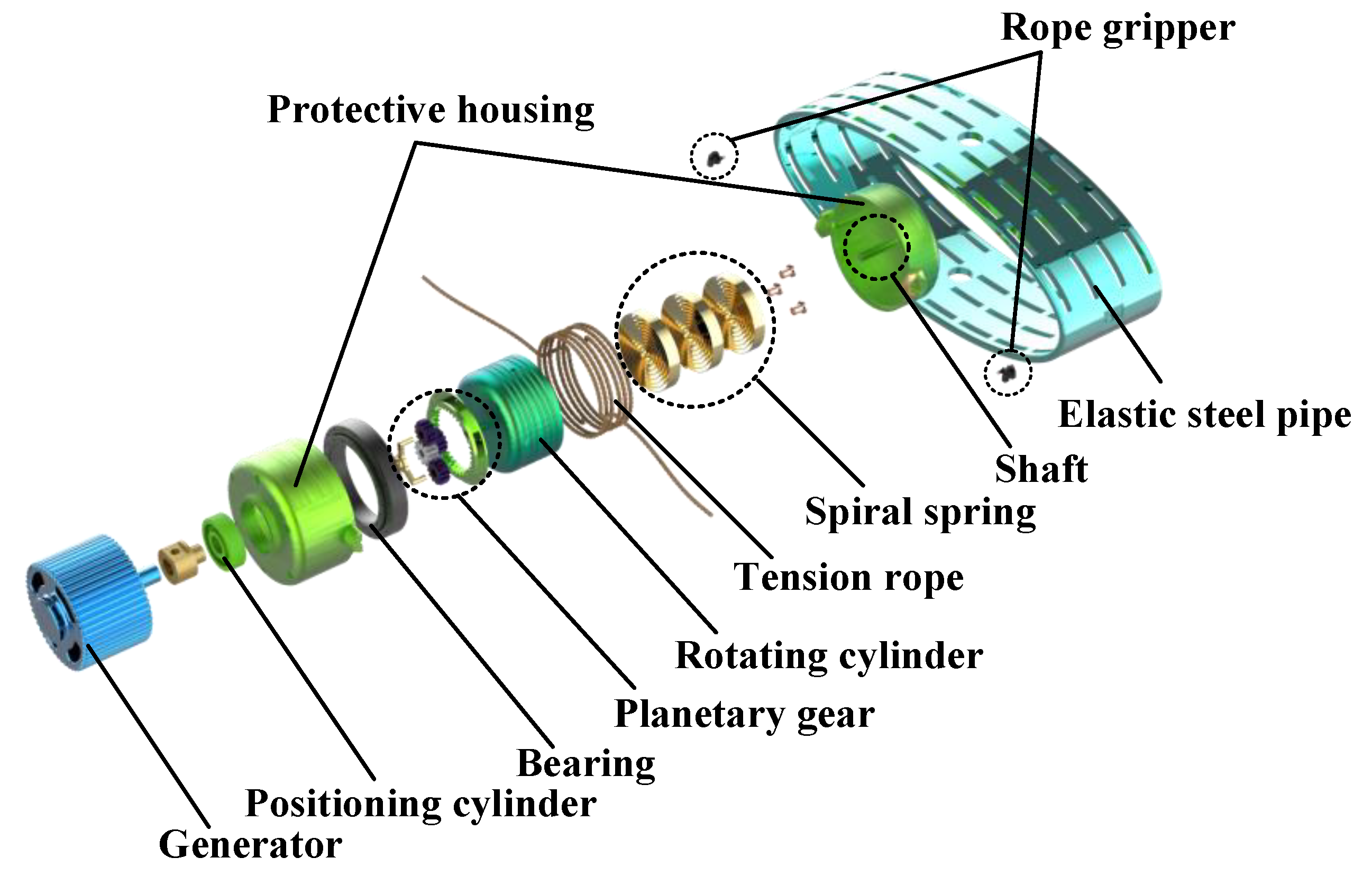
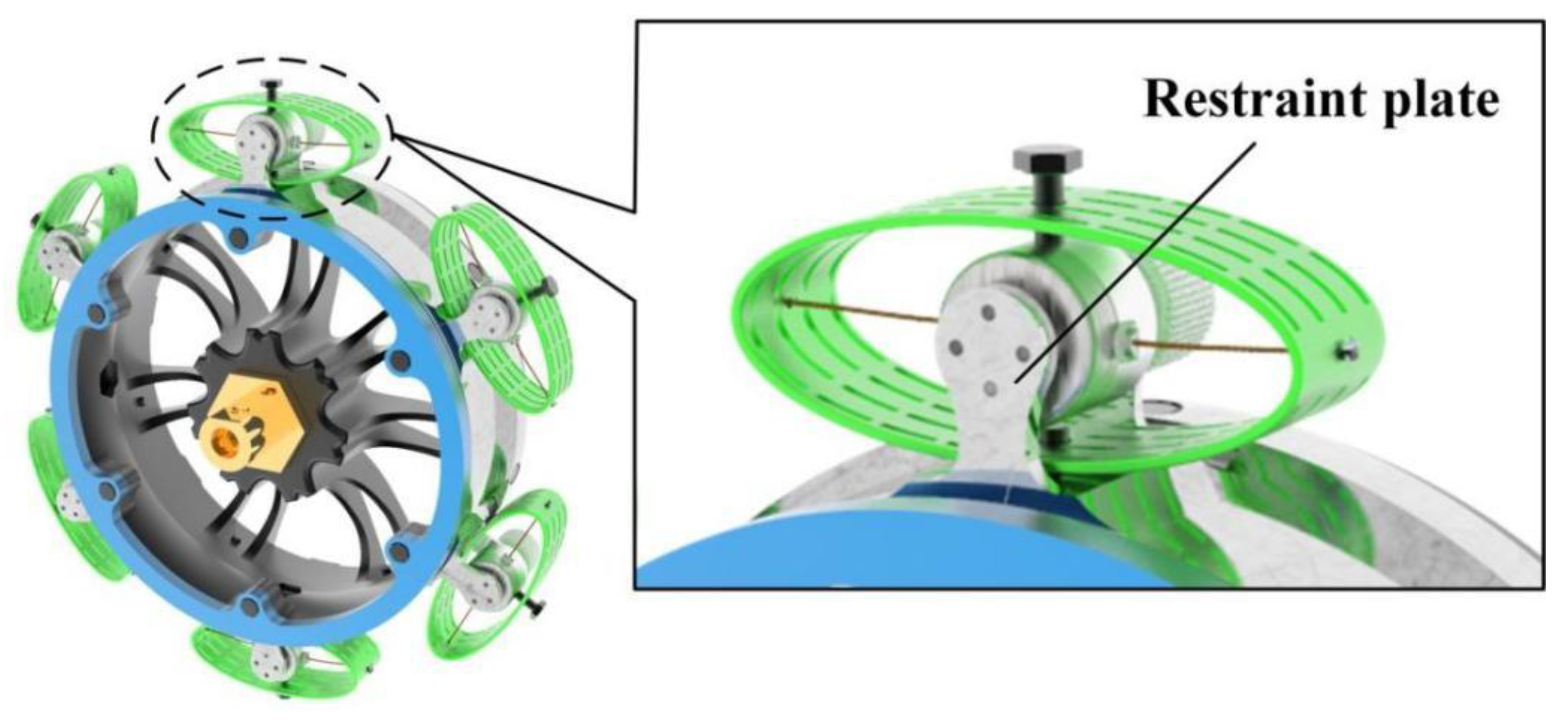
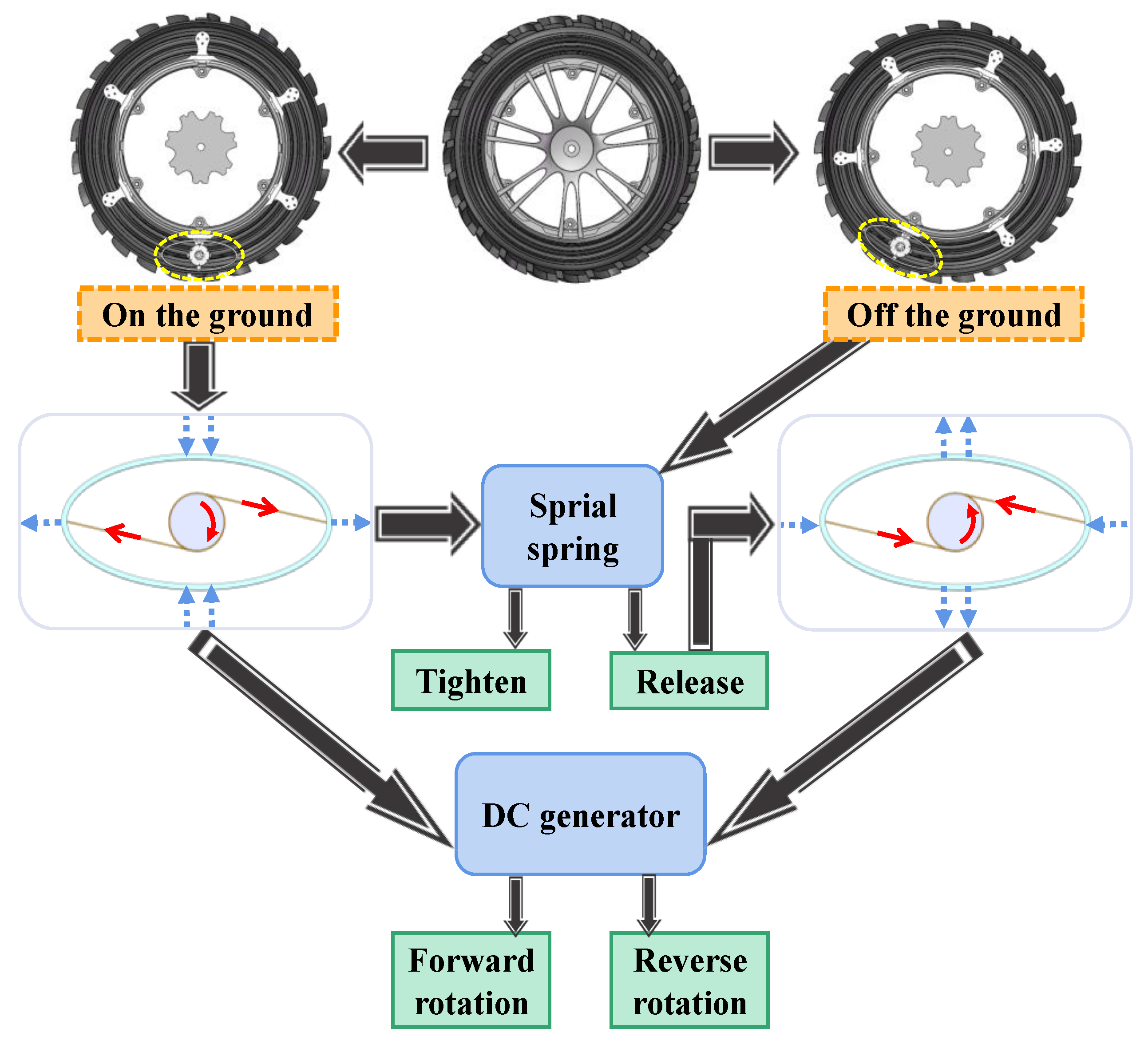
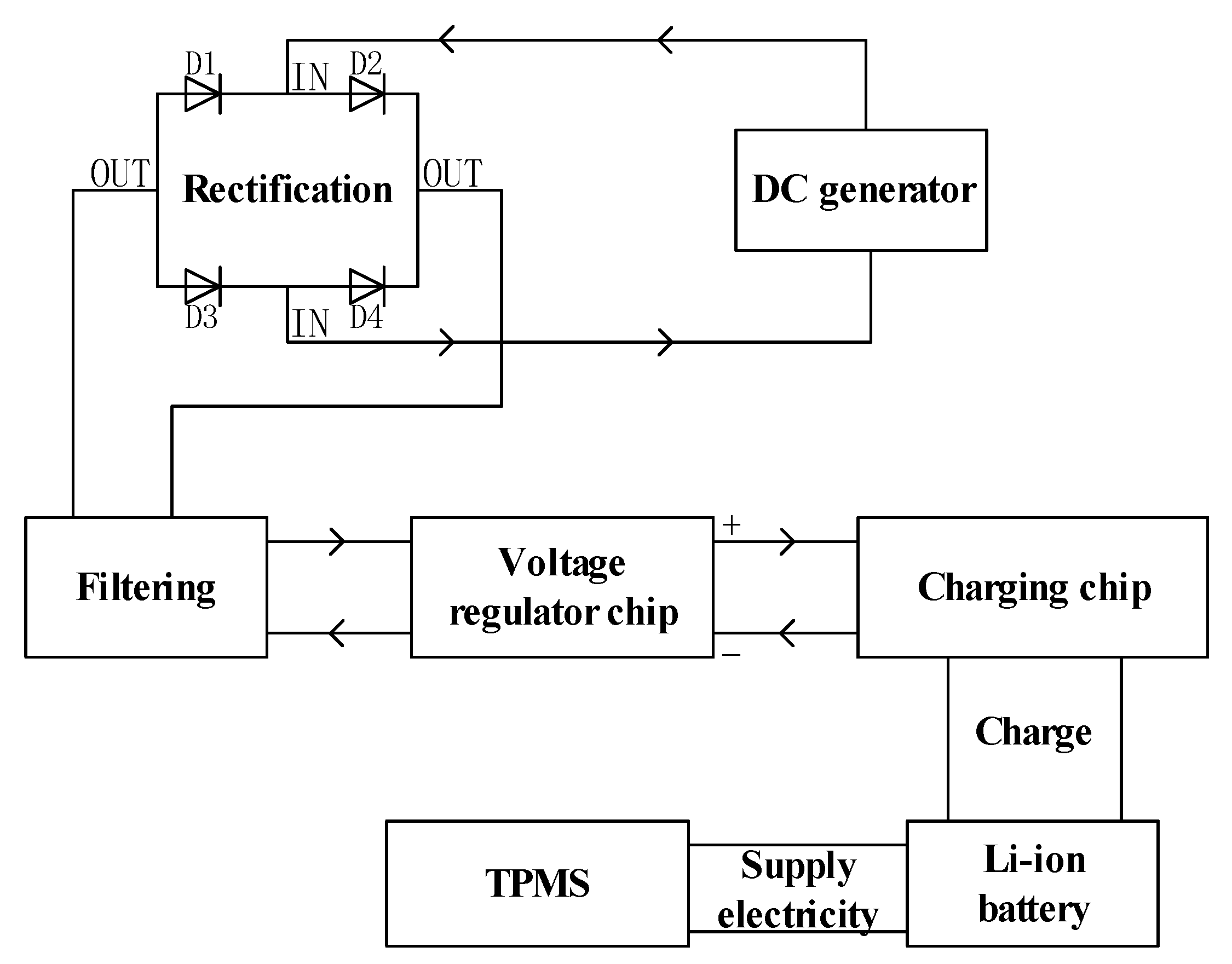



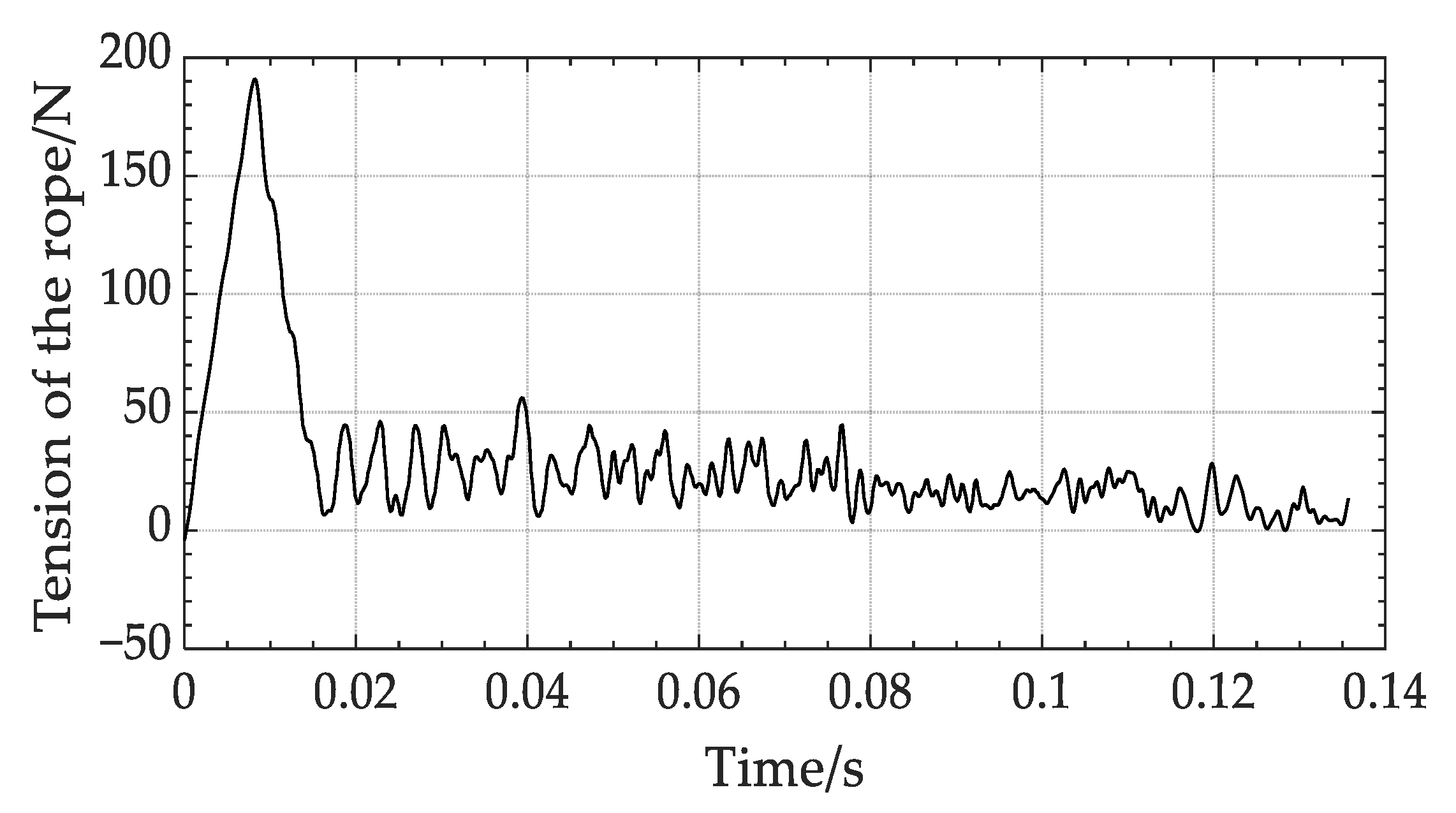







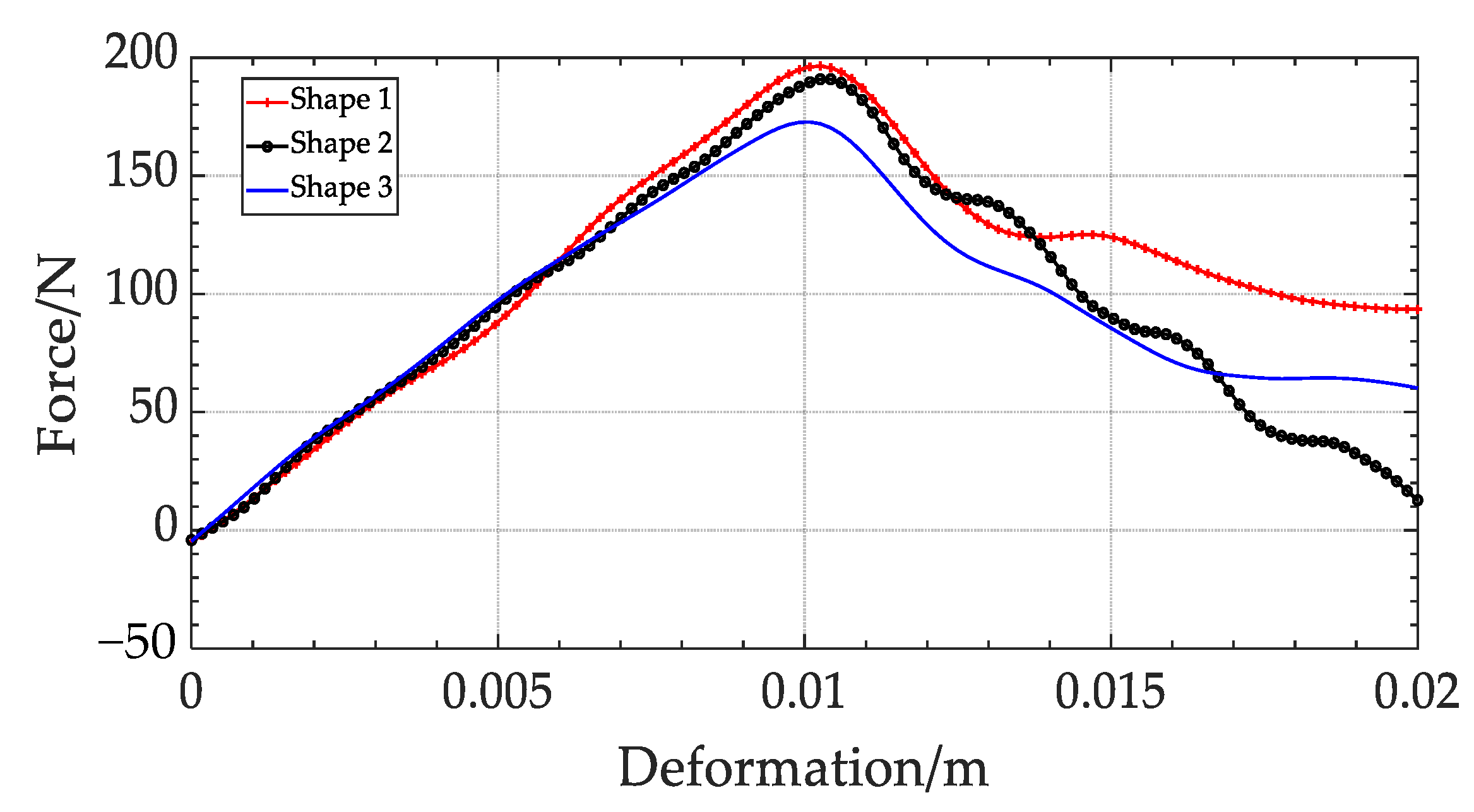
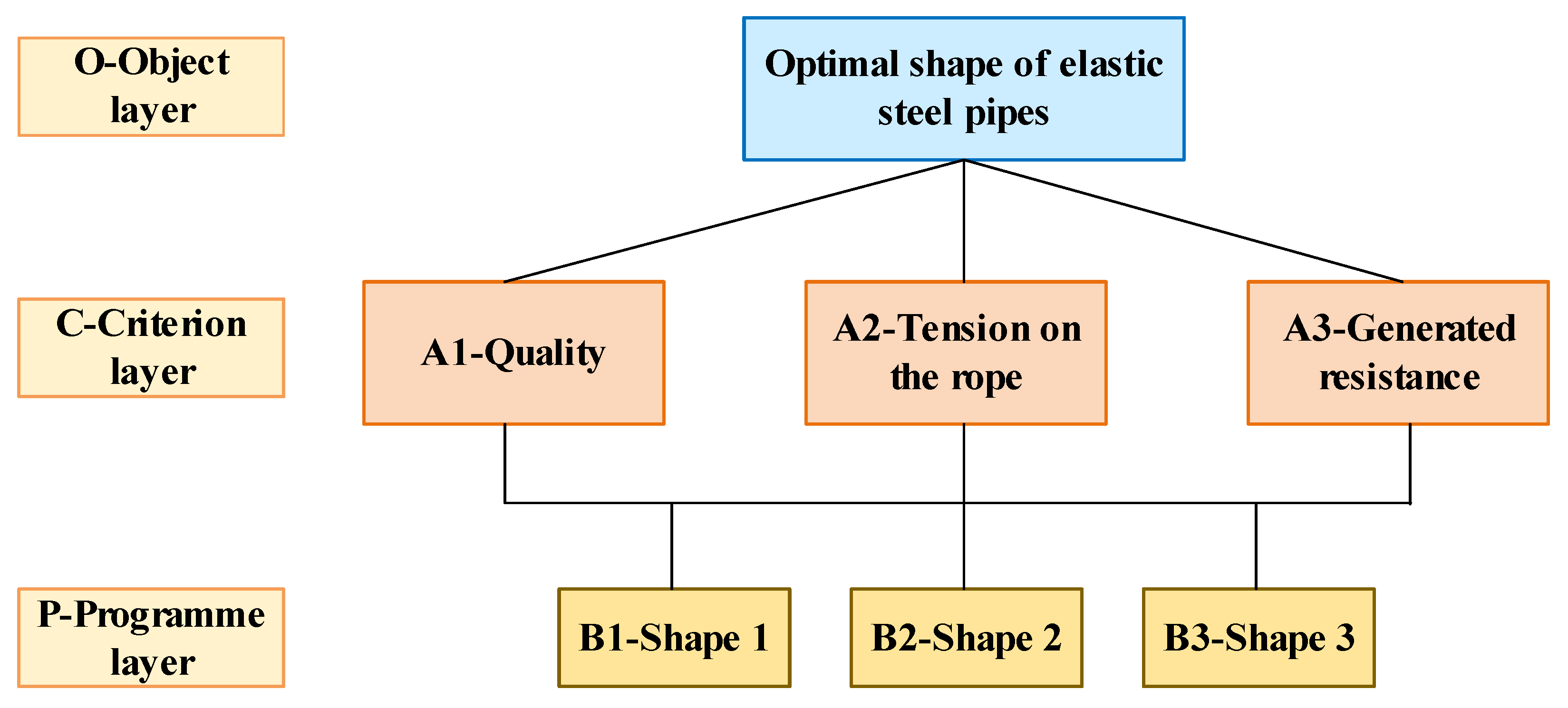

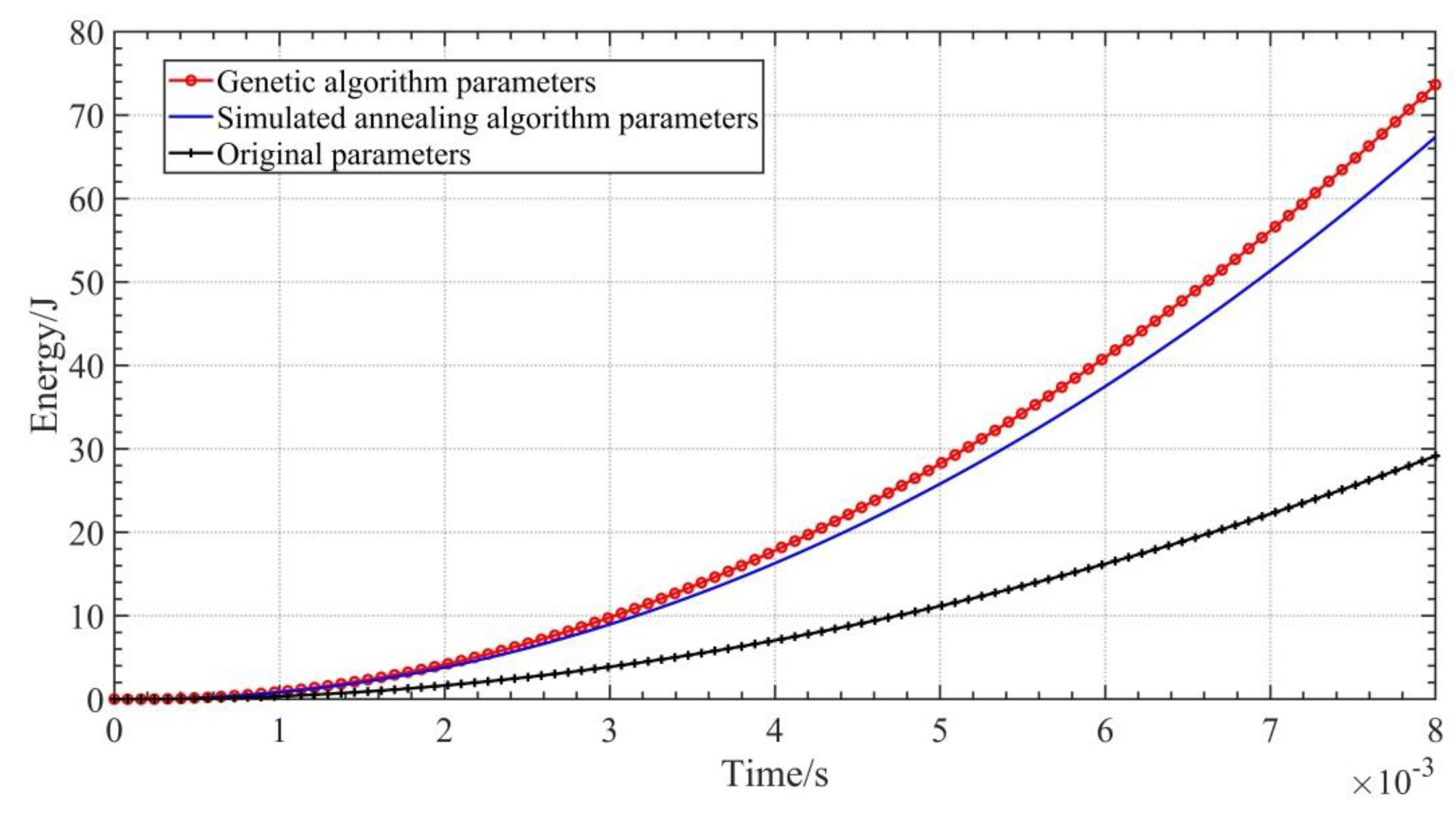



| Parameters | Value |
|---|---|
| Wheel width (mm) | |
| Hub width (mm) | 5 |
| Tire height/NEH-TPMS height (mm) | |
| Hub diameter (mm) | |
| Wheel radius (mm) |
| Symbol | Parameters | Value |
|---|---|---|
| Elastic modulus (Gpa) | 197 | |
| Tensile strength (Mpa) | 1653 | |
| Density | 7800 | |
| Thickness (mm) | 1.2 | |
| Width (mm) | 30 | |
| Length (mm) | 544.7 | |
| Shaft core diameter (mm) | 8 | |
| Spring box diameter (mm) | 45 |
| Number | References | Harvester Type | Voltage | Power |
|---|---|---|---|---|
| 1 1 | Elfrink [35] | Piezoelectric | / | 42 |
| 2 2 | Aliniagerdroudbari [21] | Piezoelectric | 7 V | 5 mW |
| 3 3 | Liu [23] | Electromagnetic | 1.22 V | 8.27 mW |
| 4 4 | Miao [36] | Electromagnetic | <3 V | 13.13 mW |
| 5 5 | Naito [25] | Electrostatic | / | 60 |
| 6 6 | Wu [26] | RFID | 3 V | / |
| 7 7 | Mao [28] | TENG | <10 V | 1.79 mW |
| 8 8 | Tani [29] | TENG | 14 V | / |
| 9 9 | This work | Mechanical | 13.28 V | 0.6 W |
| Symbol | Value | ||
|---|---|---|---|
| 0.081 | 0.342 | 0.577 | |
| 0.630 | 0.151 | 0.091 | |
| 0.151 | 0.637 | 0.691 | |
| 0.218 | 0.258 | 0.218 | |
| 3.0108 | 3.039 | 3.054 | |
| 0.054 | 0.019 | 0.027 | |
| 0.580 | 0.580 | 0.580 |
| Parameters | Value Range |
|---|---|
| (mm) | |
| (mm) | |
| (mm) | |
| (mm) | |
| (mm) |
| Step | Simulated Annealing Algorithm | Genetic Algorithm |
|---|---|---|
| Step 0 | Set the parameters in the simulated annealing algorithm. (1) Initial temperature (2) End temperature (3) Chain length (4) Cooling rate (5) | Set the parameters in the genetic algorithm. (1) Initial population size (2) Probability of variation (3) Probability of crossover (4) Number of evolutionary generations (5) (6) |
| Step 1 | Current population size | |
| Step 2 | Generate initial solutions within a reasonable range of the five decision variables. Determine if the decision variables can satisfy the constraints at this point. If they do, go to Step 3, otherwise, repeat Step 2. | Generate an initial solution within the range of values of the five decision variables. Determine if this initial solution satisfies the constraints. If it does not, repeat Step 2. If it does . If at this point , repeat Step 2, otherwise go to Step 3. |
| Step 3 | Change a random decision variable in the initial solution to be the new solution. Determine if the new solution satisfies the constraints at this point. If it does, go to Step 4, otherwise repeat Step 3. | Crossover according to the probability of and swap the random one decision variable in the two chromosomes. Determine if the new solution satisfies the constraint. If it does, go to Step 4, otherwise repeat Step 3. |
| Step 4 | Calculate the objective function of the initial solution and the new solution at this point and accept the new solution according to the Metropolis criterion. If is equal to , make equal to zero. Repeat from Step 1 to Step 4. | The variation is carried out according to the probability of . Randomly change the value of a decision variable. Determine if the new solution satisfies the constraint. If it does, go to Step 5, otherwise repeat Step 4. |
| Step 5 | Annealing. Exit the cycle if conditions are met. | For the number of solutions at this point, the solutions are selected according to the roulette wheel method. |
| Step 6 | If , go to Step 1, otherwise exit the genetic algorithm step. |
Disclaimer/Publisher’s Note: The statements, opinions and data contained in all publications are solely those of the individual author(s) and contributor(s) and not of MDPI and/or the editor(s). MDPI and/or the editor(s) disclaim responsibility for any injury to people or property resulting from any ideas, methods, instructions or products referred to in the content. |
© 2023 by the authors. Licensee MDPI, Basel, Switzerland. This article is an open access article distributed under the terms and conditions of the Creative Commons Attribution (CC BY) license (https://creativecommons.org/licenses/by/4.0/).
Share and Cite
Liu, W.; Qin, Z.; Lyu, S.-K. Design and Verification of a Novel Energy Harvester for Tire Pressure Monitoring Systems. Machines 2023, 11, 562. https://doi.org/10.3390/machines11050562
Liu W, Qin Z, Lyu S-K. Design and Verification of a Novel Energy Harvester for Tire Pressure Monitoring Systems. Machines. 2023; 11(5):562. https://doi.org/10.3390/machines11050562
Chicago/Turabian StyleLiu, Wenjia, Zhen Qin, and Sung-Ki Lyu. 2023. "Design and Verification of a Novel Energy Harvester for Tire Pressure Monitoring Systems" Machines 11, no. 5: 562. https://doi.org/10.3390/machines11050562
APA StyleLiu, W., Qin, Z., & Lyu, S.-K. (2023). Design and Verification of a Novel Energy Harvester for Tire Pressure Monitoring Systems. Machines, 11(5), 562. https://doi.org/10.3390/machines11050562






